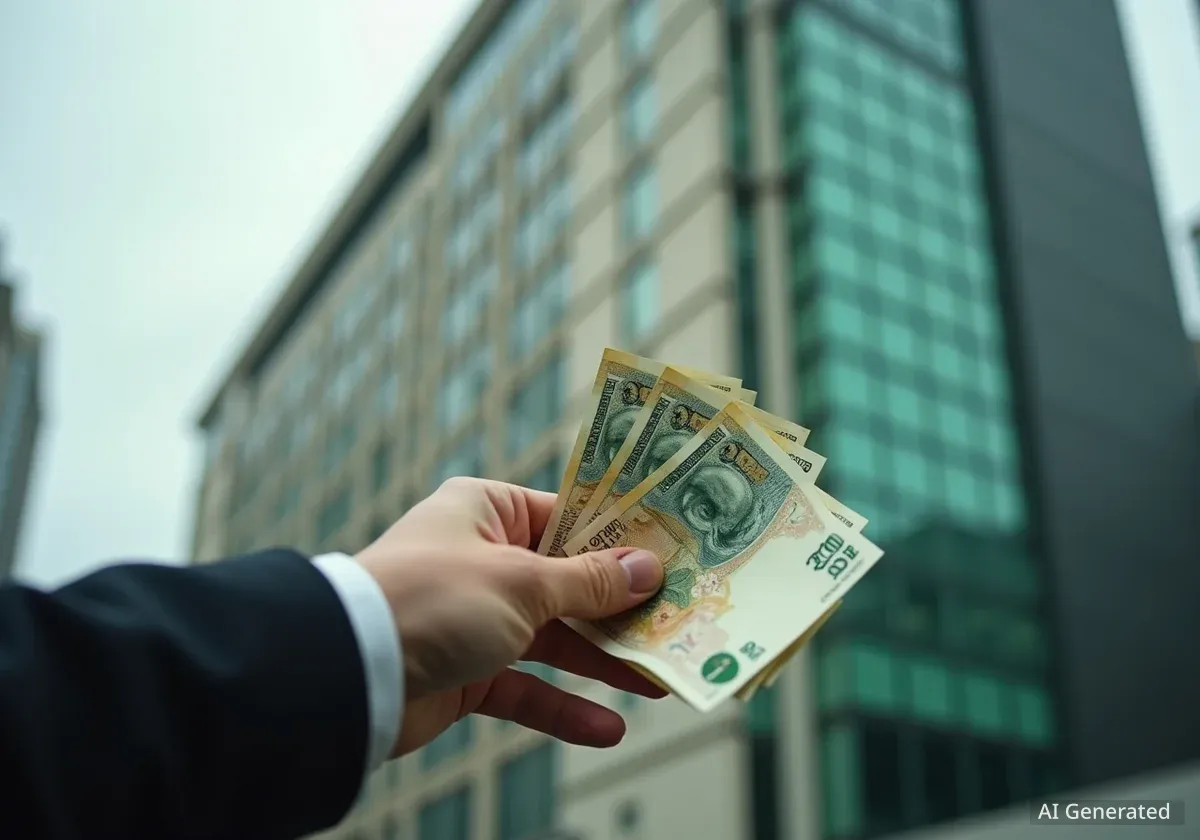Property owners across the United Kingdom and Europe are confronting significant pressure to enhance the environmental standards of their buildings. However, industry experts suggest that financial incentives like 'green loans' are not yet robust enough to accelerate this necessary transition, leaving a substantial gap between climate goals and current market realities.
The buildings and construction sector is a major contributor to global carbon emissions. According to a report from the UN Environment Programme, it is responsible for 32% of global energy consumption and 34% of CO₂ emissions, placing it at the center of climate change discussions.
Key Takeaways
- The building sector is a major source of global emissions, accounting for over a third of CO₂ output.
- Upcoming regulations in the UK and EU mandate significant improvements in building energy efficiency.
- 'Green loans' offer interest rate discounts but are currently considered too niche and insufficient to drive widespread change.
- A significant portion of UK commercial property, around 70%, does not meet proposed future energy standards.
- Tenant demand for sustainable buildings is increasing, with many willing to pay a premium for high-rated properties.
Regulatory Pressure Mounts on Property Owners
Governments are introducing stricter regulations to drive decarbonization. In the European Union, the Energy Performance of Buildings Directive sets a goal for a fully decarbonised building stock by 2050. Member states are required to integrate this directive into their national laws by May 2025.
In the UK, a 2020 proposal suggested that commercial buildings must achieve an Energy Performance Certificate (EPC) rating of at least B by 2030 to be legally lettable. However, the government stated in 2023 that these timelines would need updating, and the proposal has not yet become law, creating uncertainty for property investors.
Understanding Energy Performance Certificates (EPCs)
An EPC grades a building's energy efficiency from A (most efficient) to G (least efficient). These certificates are valid for ten years and are required when a property is sold, rented, or newly constructed. Currently, UK commercial properties must have a minimum rating of E to be let.
The UK's Climate Change Committee, an independent advisory body, has emphasized the urgency of the situation. The committee stated that for the UK to achieve its net-zero target by 2050, greenhouse gas emissions from non-residential buildings must decrease by 87% between 2023 and 2040.
The Role of Green Financing
To help fund the required upgrades, 'green loans' have emerged as a potential solution. These financial products offer borrowers lower interest rates for constructing or renovating properties to meet specific environmental targets. Lenders view greener buildings as lower-risk assets that are more attractive to a wider range of high-quality tenants.
However, many in the property industry believe the current green loan market is not developed enough to make a significant impact. Stephen Inglis, chief executive of London & Scottish Property Investment Management, noted the limited scope of these loans.
“There has been a growth in green loans, but they’re still far from being the norm. The pricing advantage isn’t sufficient in itself to justify the [capital expenditure],” Inglis stated. He added, “The vast majority of loans are not green loans. It’s a very, very niche part of the market.”
The financial incentives are often modest. Market participants report that typical discounts on interest rates range from 0.1 to 0.3 percentage points. Hugh White of BNP Paribas Real Estate pointed out that such small savings can easily be nullified by broader fluctuations in benchmark interest rates.
Challenges and Criticisms of Green Loans
Beyond the small financial incentive, green loans come with their own set of challenges. The administrative burden is a common complaint among developers and investors. These loans often require detailed data collection and reporting to verify that environmental targets are being met.
One real estate investor commented on the complexity, saying, “While the intent is positive, the execution can be onerous and, in some cases, may limit the ability to deliver on [a] business plan.” The key performance indicators (KPIs) can also vary significantly from one lender to another, adding another layer of complexity for borrowers.
Lender Participation is Limited
A report by Puma Property Finance and the UCL Centre for Sustainable Governance and Law in the Built Environment highlighted the lack of widespread adoption. The study found that 26% of lenders did not offer any form of sustainable finance, and for another 45%, it was unclear from their public information whether they did.
Hanane Hafraoui at the United Nations Environment Programme stressed the need for expansion. “This sort of financing needs to be scaled up,” she said, indicating that the current scale is insufficient to meet global climate goals.
Shifting Tenant Demand and Market Opportunities
Despite the shortcomings of green financing, market forces are also pushing property owners toward sustainability. Tenants are increasingly prioritizing environmental performance when choosing office space.
A survey by property agency Knight Frank revealed that 58% of office occupiers consider ESG (Environmental, Social, and Governance) factors in their rental decisions. Many expect rent discounts for buildings with poor energy performance and are willing to pay more for properties that meet high sustainability standards.
This demand is critical, as a large portion of existing building stock is outdated. Knight Frank also found last year that 70% of UK commercial property was rated EPC C or below, far from the proposed 2030 target of B.
Proactive Investment Strategies
Some firms are moving ahead with sustainability projects, viewing them as a competitive advantage rather than a regulatory burden. Urban Partners, a private investment firm managing €22.7 billion in assets, is developing an office in Copenhagen designed to be nearly self-sufficient in energy by using geothermal systems and solar panels.
Rune Kock, co-head of real estate at Urban Partners, explained their motivation. “It’s not the regulation that forces us to adapt and change, it’s more the opportunity and competitiveness,” he said. “Geothermals, heat pumps, insulation — it’s typically value-accretive.”
Certain lenders are also offering more substantial incentives. Puma Property Finance, for instance, provides discounts of up to 1% deducted from a loan's exit fee if green targets are met. Paul Frost, the company's managing director, believes this approach is necessary to effect real change.
“I’m not sure that [standard discounts available on green loans] are driving changes in behaviour,” Frost said. “We are willing to accept a lower return to drive that change.”
As regulations tighten and tenant expectations evolve, the pressure on property owners will only intensify. While the green loan market is still in its early stages, the underlying business case for sustainable buildings is becoming increasingly clear.





